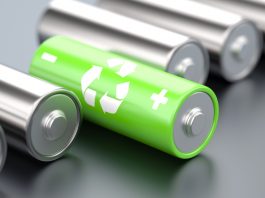Daimler has confirmed plans to build a new battery recycling factory in Kuppenheim, Germany to expand operations.
Although rumours about a planned battery recycling plant have been previously circulated, the German automaker had not yet disclosed the location for the plant or additional details until now.
According to Daimler, the production in Kuppenheim is due to commence in 2023, “depending on the outcome of the promising discussions with the public authorities”. Daimler also explained that they are, “currently evaluating and planning the construction of a battery recycling factory in Kuppenheim, Germany, in order to create and secure recycling capacities and the related expertise.”
Kuppenheim is a town located on the far west side of the state of Baden-Württemberg, situated very close to the border of France and close to the Daimler heartland and headquarters of Stuttgart. With the know-how developed in Kuppenheim, Daimler intends to prepare for the increasing number of batteries to be recycled. Daimler explained that “with regard to the life cycle of electric vehicles, significant amounts of material to be recycled are to be expected in the 2030s. Only then will a first large proportion of electric vehicles, which will be delivered in larger quantities from 2020, have reached the end of their service life.”
Battery recycling plant project
Daimler has also expressed that their intention is to focus on second life applications for the batteries before they are recycled since electric car batteries have proven useful in stationary storage applications beyond their functionality for mobility purposes. Daimler has not yet revealed details on the scope of the recycling plants actions.
In recent reports, Daimler had only established that it was planning a battery recycling plant at the Gaggenau factory, mentioning the Kuppenheim pressing plant, which is part of the Gaggenau plant, as a possible location for the pilot plant. Nevertheless, there was talk that the later factory for recycling on a larger scale was to be constructed elsewhere due to reasons of space, according to the information at the time.
On the subject of the Kuppenheim location, Badisches Tagblatt writes “In circles of local politics and regional planning, there are increasing signs that Kuppenheim once again has the best chances for the regular factory,” referring to operations to scale beyond the pilot plant. The site is said to be an 11.3-hectare area to the east of the pressing plant. Daimler has yet to officially confirm these details.
It also remains unclear as to how many jobs would be established in the pilot plant and the later regular factory. The mayor of Kuppenheim, Karsten Mußler, is said to have spoken in October of around 1,000 new jobs that could be created in the district if the project is “successful”. However, as Badisches Tagblatt writes with reference to company circles, Daimler rather assumes 50 jobs in the pilot factory and 150 jobs in the regular operation will be generated.
Batteries of key focus of the circular economy
As part of Daimler’s holistic approach, they have the circular economy in mind from the very start whenever they develop a product. This also applies to the development of the entire battery technology. Daimler expressed that “during the development of a vehicle, we create a concept for each vehicle model in which all components and materials are analysed for their suitability in the context of a circular economy. It also examines the extent to which the components and materials are suitable for the various stages of the recycling process, including the material recycling of the battery raw materials used.” This analysis takes the entire value chain into account, from the mine to the recycling process.
Daimler’s development goal is to boost energy density in order to greatly extend their range of future batteries. They also anticipate to significantly shorten charging times, accelerate the series maturity of future battery technologies, and further reduce the use of critical materials. For example, in the coming generations of battery cells the cobalt content will already be reduced to less than ten percent. Daimler adds that “our objective is to dispense with materials such as cobalt altogether by using post-lithium-ion technologies with new material compositions. The further optimisation of recyclability and its implementation is also part of our holistic battery strategy.”









